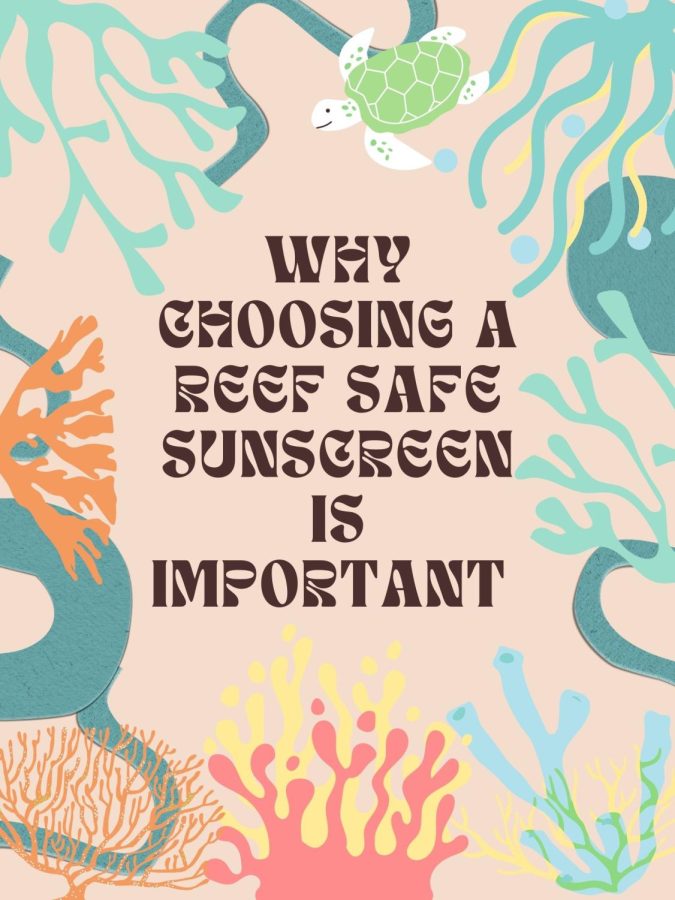Why Choosing A Reef-Safe Sunscreen Is Important
Choosing a reef-safe sunscreen can greatly benifit the environment.
May 27, 2022
An article from National Geographic reads, “By the numbers, the problem is daunting: 14,000 tons of sunscreen are thought to wash into the oceans each year; 82,000 chemicals from personal-care products may be tainting the seas; about 80 percent of corals in the Caribbean have been lost in the last 50 years due to pollution, coastal development, and warming waters.” Why is reef-safe sunscreen important?
In simple terms, reef-safe sunscreen uses an SPF that uses UVA and UVB filters. When searching the ingredients, you should look for active ingredients zinc oxide and titanium dioxide. These ingredients create a literal shield to protect the skin.
How can you see if your sunscreen is reef-safe? Checking the back of your sunscreen bottle for the ingredients can ensure that your sunscreen is “reef-friendly”. You should avoid sunscreens that include Oxybenzone, Octinoxate, Octocrylene, Homosalate, 4-methylbenzylidene, PABA, Parabens, Triclosan, nanoparticles or “nano-sized” zinc or titanium, and microplastics.
Unfortunately, the majority of popular sunscreen brands are not reef-safe. That said, SunBum, Supergoop!, Neutrogena, BananaBoat, Alba Botanica, and Hawaiian Tropic are all brands that formulate reef-safe sunscreen.
In 2018, Hawaii was the first place in the world to pass a ban on oxybenzone and octinoxate sunscreens. There are many ways you can protect the coral reefs locally; one being, of course, by informing others about reef-safe sunscreens.
To sum it up, when looking for a reef-safe sunscreen, check for zinc oxide and titanium dioxide.







